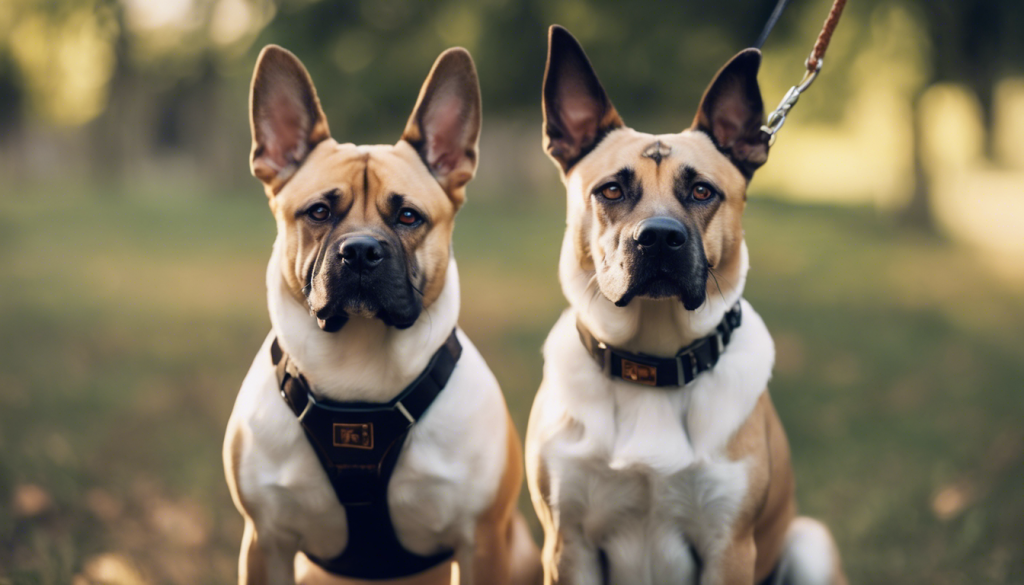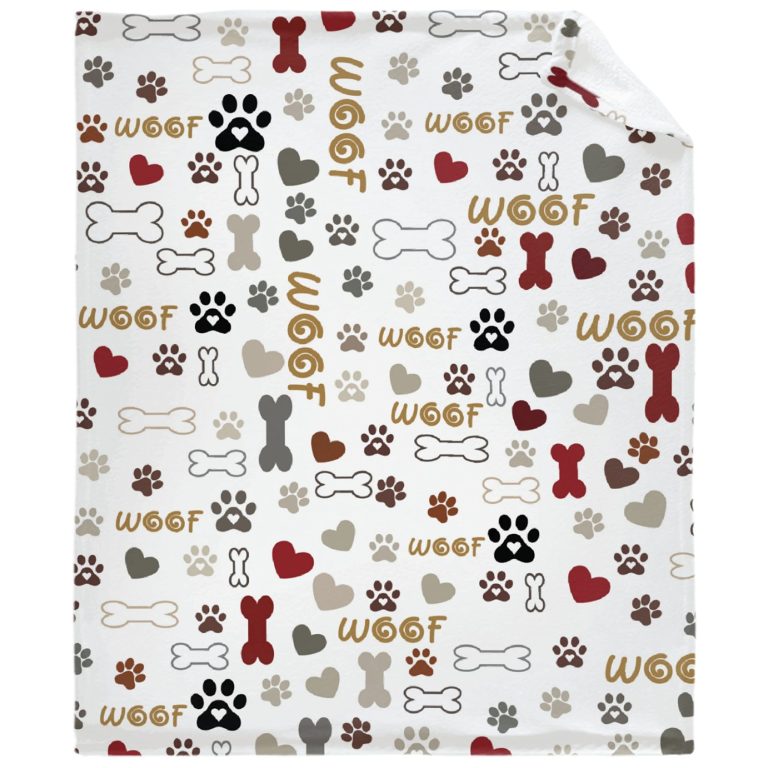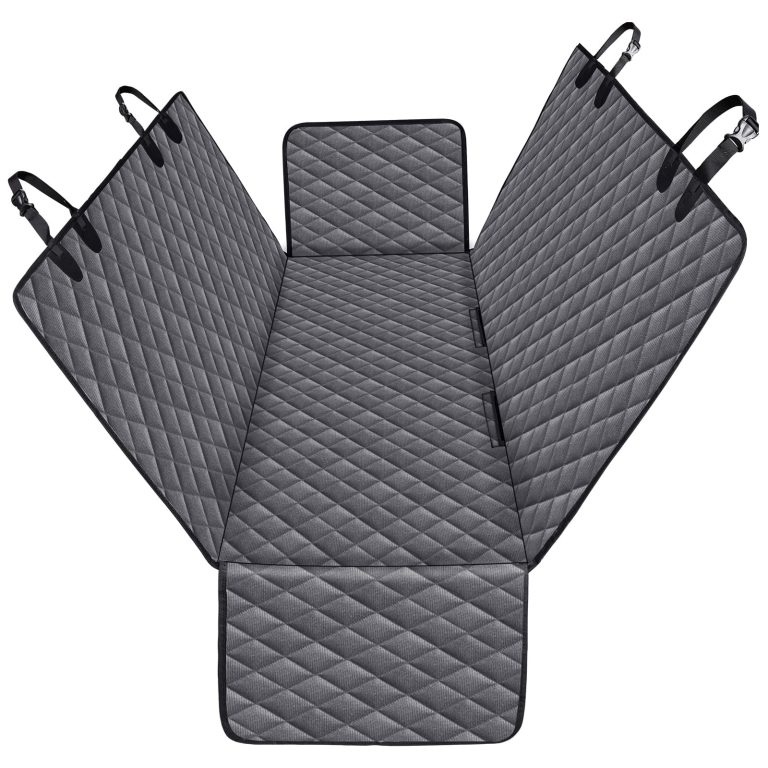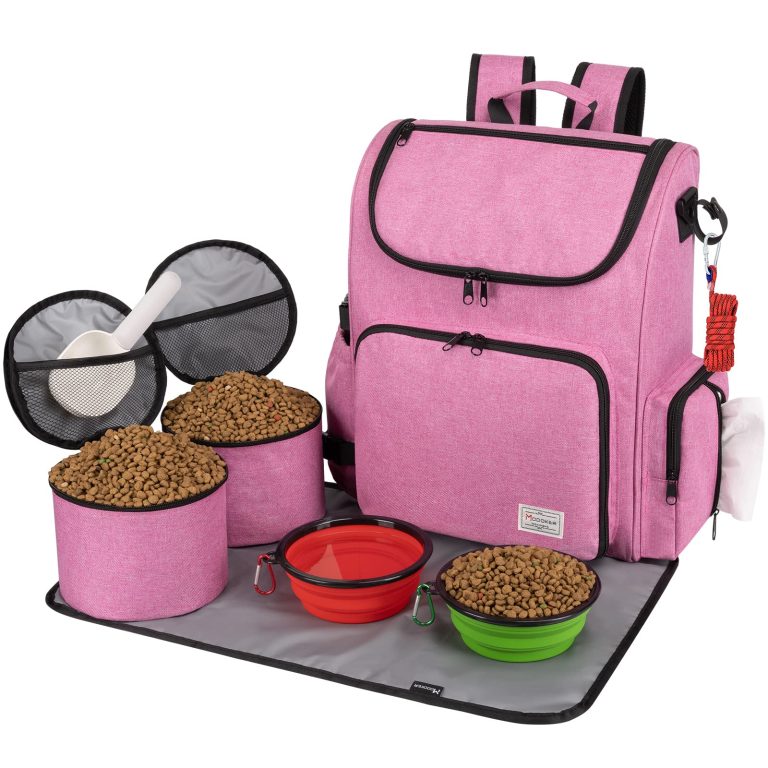The Benefits of Canine Reflexology for Stress Relief

Canine reflexology is an emerging holistic practice that draws upon the principles of traditional reflexology, which posits that specific points on the paws, ears, and face correlate with various body systems and organs. This gentle, non-invasive therapy aims to enhance the natural healing processes of our four-legged companions by focusing on these reflex points, thereby promoting health and well-being.
Rooted in the understanding of energy pathways and the interconnectedness of bodily functions, canine reflexology engages not only the physical aspect of dogs but also their emotional and psychological states. Sessions typically involve the skilled application of pressure and manipulation to these reflex points, inducing relaxation and a profound sense of comfort. The rhythmic kneading and gentle massaging can evoke a tranquil ambiance that most dogs instinctively respond to, illustrating the mind-body connection crucial to animal welfare.
This practice becomes particularly vital when considering the stressors inherent in a dog’s life, which may include changes in environment, social interactions, or even routine vet visits. Just as humans benefit from massage therapy, dogs also experience a myriad of physiological and psychological benefits. Reflexology serves as a wonderful adjunct to traditional veterinary care, augmenting holistic health regimes by reducing anxiety, easing discomfort, and fostering a deeper bond between pet and owner.
In understanding canine reflexology, it’s important to note its emphasis on individualized practice; each dog is unique, and their responses may differ based on temperament, age, and previous experiences. While some dogs may revel in the soothing touch and quickly relax into a state of blissful tranquility, others may require a more gradual approach. By cultivating a serene environment, enhancing the dogs’ comfort with familiar scents or calming music, and exhibiting extreme patience, pet parents can facilitate a deeper level of trust, allowing reflexology to take its full effect.
Studies have suggested that canines receiving regular reflexology treatments exhibit improved circulation, enhanced muscle tone, and a greater capacity for relaxation, which are vital for optimal health. Furthermore, the emotional benefits extend beyond the immediate session, often manifesting in altered behavior patterns, a reduction in fear-based responses, and an overall improvement in the quality of life. As it’s often said in the realm of holistic health, “a relaxed dog is a happy dog,” illustrating that the road to canine contentment may very well begin with an attentive and skillful touch.
How reflexology alleviates stress
In a world where constant stimulation and quick-paced environments can overwhelm our canine companions, reflexology emerges as a soothing antidote to the stressors they face daily. The meticulous application of pressure on designated reflex points instigates a cascade of calming physiological responses that profoundly affect a dog’s state of mind. By engaging the parasympathetic nervous system, reflexology turns on the body’s “rest and digest” mode, counteracting the distress signals often triggered by anxiety or excitement. This gentle practice not only alleviates tension in the moment; it contributes to a long-term coping mechanism for stress management.
When a dog is subjected to reflexology, the manipulation of specific zones can lead to an increase in the production of endorphins—those natural mood elevators that create feelings of happiness and relaxation. Just as a well-timed rub on a sore back can relieve tightness in a human, targeting the right reflex points on a dog can trigger similar feelings of well-being and contentment. The tactile feedback stimulates nerve endings that communicate with the brain, effectively ushering the animal into a deeply relaxed state that often manifests as a tranquil demeanor, softening of muscles, and a deepening of breathing.
Moreover, the ritual of a reflexology session becomes a shared experience, reinforcing the bond between pet and owner. This shared time can serve as a soothing counterbalance to the unpredictable nature of a dog’s life. For instance, a dog that has recently transitioned to a new home may find solace in the rhythmic touches of reflexology after a day filled with uncertainties. As the familiar hands of a loving owner proceed to knead the paws and press gently on the ears, the dog begins to associate the process with relief—a personal sanctuary in an often tumultuous world.
It’s also essential to recognize the profound impact reflexology can have on behavioral issues stemming from anxiety. Dogs that exhibit signs of fearfulness, such as excessive barking, destructive chewing, or withdrawal, may respond positively to regular reflexology sessions. These gentle interventions can calm the nervous system and potentially decrease the frequency of these stress-induced behaviors. As it has often been said, “calm breeds calm,” and the more relaxed a dog feels, the less likely it’s to engage in behaviors that emanate from fear-based responses. Using reflexology with consistent practice not only helps soothe the sensitive spirit but also builds a foundation of trust and safety within the pet-owner dynamic.
The harmonizing effects of reflexology resonate through the very fibers of a dog’s well-being. By fostering environments where dogs can feel safe, loved, and cared for, reflexology becomes more than just a therapeutic practice; it evolves into an essential part of the holistic approach to pet parenting. As with all good practices, the key is mindfulness and consistency—creating not just a method of relaxation, but a lifelong habit that enhances quality of life. With these insights into how reflexology alleviates stress, pet owners are equipped with tools to usher their furry friends into a more balanced, peaceful existence amidst the chaos of the state-of-the-art world.
Techniques used in canine reflexology
In the realm of canine reflexology, the techniques employed are as varied as the individual dogs they serve, each practice meticulously crafted to address specific needs and responses. Central to this therapeutic modality is the understanding that reflexes can be stimulated through precise pressure, thereby activating the body’s own healing mechanisms. The application of techniques such as thumb walking, kneading, and gentle stretching on points located on the paws, ears, and face can work wonders in promoting relaxation and enhancing physical well-being.
Thumb walking, a foundational technique in reflexology, involves using the thumbs to glide along the reflex points in a slow, steady manner. This method calls for a gentle, rhythmic pressure that encourages dogs to relax. As the thumb travels over sensitive areas, it prompts a release of tension stored in the muscles and tissues, easing stress and enhancing circulation. Each dog will respond differently, and being attuned to their reactions allows pet parents to fine-tune pressure and speed according to their companion’s comfort level. For example, some dogs may respond positively to a firmer touch, while others may prefer a lighter approach, highlighting the importance of nurturing an intuitive connection during each session.
Kneading, another effective technique, is akin to a gentle massage and involves manipulating the paw pads and toes. This method not only stimulates vital reflex points but also fosters a sense of comfort and safety in the animal. Dogs, being creatures of habit, often find solace in repetitive motions, and the accompanying pressure can release endorphins, further enhancing their sense of well-being. Those who have experienced this technique have noted how dogs often lean into the pressure, signaling a state of relaxation that can melt away a day’s worth of anxiety.
Additionally, gentle stretching is an important element of canine reflexology that can greatly improve a dog’s flexibility and ease muscle tension. When performed correctly, stretches can help alleviate discomfort related to stiffness or previous injuries, particularly in elder dogs or those recovering from surgery. A careful and mindful approach to stretching, focusing on neck, back, and leg movements, invites greater mobility and signals to the dog that their well-being is being prioritized. As the renowned dog trainer Cesar Millan once said, “You can’t train a dog if you don’t speak the dog’s language,” emphasizing the importance of understanding each dog’s signals and adapting techniques accordingly.
Incorporating a variety of these techniques into a routine can greatly enhance the benefits of reflexology. For instance, a regular schedule of sessions not only familiarizes the dog with the process, fostering anticipation rather than anxiety, but also encourages deeper relaxation over time. Working progressively through the reflex points rather than overwhelming the dog with extensive sessions can set the stage for positive experiences. This staged approach acknowledges the individuality of each pet and underscores a pet parent’s role as both caretaker and partner in wellness.
Moreover, employing calming elements such as soft music and soothing scents—think lavender or chamomile—can elevate the overall experience. As the ambient environment becomes one of tranquility, the efficacy of reflexology is magnified; dogs are more likely to surrender to the comforting touch when they feel enveloped in a serene atmosphere. As pet parents learn to incorporate these techniques with empathy and understanding, they not only engage in a beneficial practice but cultivate a profound connection with their furry companions. Each session of reflexology thus transcends mere technique, evolving into a dance of trust and affection this is important for the emotional health of both the dog and its owner.
Benefits for dogs and their owners
The multifaceted benefits of canine reflexology extend far beyond the immediate physical improvements experienced by the dog; they resonate deeply within the emotional and psychological spheres of both the canine and its devoted owner. At the very heart of this practice lies the profound enrichment of the human-animal bond, a connection that flourishes through shared moments of relaxation and care. As each session unfolds, pet parents may notice significant shifts in their dog’s overall demeanor—an increased playfulness, a newfound curiosity, or an enhanced willingness to engage with their surroundings—transforming everyday routines into joyful experiences.
One of the remarkable outcomes of regular reflexology sessions is the palpable reduction in stress and anxiety levels. Dogs exposed to this nurturing practice often exhibit a noticeable easing of fears, which can alleviate common behavioral issues like excessive barking, panting, or destructive tendencies. By cultivating an atmosphere where the dog feels safe and cherished, owners can witness a gradual transition from trepidation to tranquility, enabling their faithful companions to navigate the complexities of life with renewed confidence. Indeed, dogs often emerge from these sessions more open to social interactions, be it with humans or fellow canines, showcasing an improved adaptability that speaks volumes of their internal state.
The synchronicity of body and mind fostered by reflexology can also translate into enhanced physical health. Dogs undergoing this therapy can experience improved digestion, increased circulation, and even pain relief from chronic conditions. For instance, older dogs or those recovering from injuries may discover newfound mobility, allowing them the freedom to enjoy life’s simple pleasures, from a brisk romp in the park to a leisurely stroll around the neighborhood. In essence, what begins as a targeted therapeutic intervention can evolve into a holistic pathway to overall well-being, where each gentle touch plays a part in mitigating discomfort and facilitating healing.
Moreover, the practice aids pet parents in honing their skills as attentive caregivers. Engaging in reflexology provides an opportunity to better understand one’s dog—its likes, dislikes, and unique responses—thus deepening the empathy integral to effective pet parenting. As the old adage suggests, “to understand the heart of a dog is to breed love.” Through observing their dog’s reactions to various techniques, pet owners may uncover previously unnoticed cues regarding their pet’s emotional landscape, fostering a richer interaction that transcends conventional training methodologies.
Additionally, reflexology acts as an invaluable tool for owners seeking to promote a peaceful and harmonious environment at home. By integrating this therapeutic ritual into daily life, families inadvertently establish a routine that prioritizes emotional wellness—not just for the dog, but for all members of the household. The calming effect of these sessions can extend into family dynamics, cultivating a sanctuary of tranquility that allows each member to recharge physically and emotionally. Engaging in mindful practices together, often accompanied by soothing music or shared moments of stillness, infuses the home with a spirit of serenity that benefits everyone involved.
In this light, the benefits of canine reflexology are multifold, intertwining health, happiness, and harmony into the everyday lives of both dogs and their owners. The transformative impacts noted within each session stand testament to the mythos that pets are not merely animals; they’re, indeed, family. By participating in this practice, pet parents gift their dogs with the profound stress relief that all creatures—human and animal alike—so desperately need. Each paw pressed, every reflex point stimulated, becomes a declaration of love, care, and commitment to a life fully enjoyed together.
Incorporating reflexology into your routine
Incorporating reflexology into your daily routine can seem daunting at first, particularly for busy pet owners juggling the myriad responsibilities that come with maintaining a household. However, with a little planning and mindfulness, you can seamlessly weave this restorative practice into your life, enhancing both your well-being and that of your canine companion.
The first step is to establish a dedicated space where reflexology sessions can take place. This area should be quiet, free from distractions, and infused with elements that promote relaxation. Think soft bedding or a cozy blanket where your dog feels secure, combined with gentle lighting that creates a calming atmosphere. Ponder employing soothing scents, like lavender or chamomile, through the use of essential oils (ensuring they’re pet-safe), as these can further help to set the stage for a serene experience.
Timing especially important in ensuring the success of these sessions. Ideally, choose moments when both you and your dog are relatively calm—perhaps after a leisurely walk or following playtime when energy levels begin to wind down. Observing your dog’s natural rhythms can guide you in selecting the most opportune moments for reflexology, similar to how one might choose to meditate or unwind after a long day. As the famous dog trainer Victoria Stilwell aptly notes, “It’s important to recognize that training involves understanding and timing,” and the same principle extends beautifully to the therapeutic context of reflexology.
When beginning your reflexology practice, it can be beneficial to start with short, five to ten-minute sessions. This allows both you and your dog to acclimate to the experience without feeling overwhelmed. As you and your pet grow more comfortable, gradually increase the duration, perhaps extending sessions to twenty or thirty minutes. Regular practice—as infrequently as once or twice a week—can lead to cumulative benefits, building upon each session to evoke deeper relaxation and greater emotional connection.
Integrating reflexology with other bonding activities can further enrich the experience. Consider using this time to engage in light play or incorporate soothing music to elevate the ambiance. A soft background track can foster an inviting and tranquil environment, perfect for a calming reflexology session. If you find your dog particularly enjoys gentle brushing or cuddling, these nurturing actions can dovetail nicely with reflexology, creating a holistic ritual centered around attentiveness and affection.
As your competence increases, so too can your variety of techniques. Experiment with different approaches, ranging from thumb walking to kneading and gentle stretching, quickly adapting your methods based on your dog’s responses. This not only keeps the sessions engaging but allows you to fine-tune your craft as an intuitive caregiver. Always pay close attention to cues from your pet – their body language will provide insight into what they enjoy and what may need adjustment. For example, a dog leaning into your touch or sighing softly may signal contentment, whereas nervous shifting away or attempts to evade your hands might indicate the need for a gentler touch or a break.
Encourage other members of the household to participate in reflexology as well; this fosters a collective experience that can deepen the family bond and enables different perspectives on your dog’s responses. Teaching techniques among family members promotes teamwork around the well-being of your pet, turning routine care into a shared family activity that everyone can enjoy. Importantly, make it a point to celebrate your dog’s progress, whether through improved relaxation during sessions, enhanced behavior over time, or simply newfound joy in daily interactions.
Lastly, documenting the reflexology journey can be quite rewarding. Keeping a simple diary or log where you jot down notes about each session—your dog’s temperament beforehand, techniques used, and any observable changes—can provide valuable feedback. Over time, these entries will not only help in recognizing improvements in your dog’s behavior and stress levels but also serve as a cherished reflection of the growing bond you’ve cultivated through this practice. Continuous adaptation and acknowledgment of the relationship will propel both you and your dog towards deeper levels of connectedness, grounded in love, trust, and mutual care.







